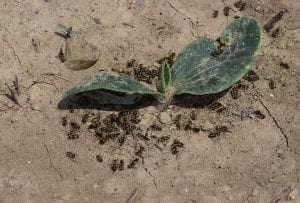The nation’s premier event for mechanical weeding tools – will take place on Wednesday, September 27, at The Ohio State University, CFAES Wooster campus.
Here is the general information for the event:
When: Wednesday, September 27, 2023
Where: OSU Wooster Campus, 1680 Madison Ave, Wooster, OH 44691
How Much: $50 (includes lunch)
Register online at:
https://thelandconnection.regfox.com/2023-midwest-mechanical-weed-control-field-day

Field day photo.
Register by calling Crystal at (217) 840-2128.
A full day of weeding tool demonstrations, trade show, and cultivation education for both vegetables and row crops! At the morning Expo trade show you can see weeding tools and speak with company reps from manufacturers in the US, Europe, and Japan, and meet the farmers in attendance from all over the region plus learn from experienced farmers and university weed scientists from surrounding states during the roundtable discussions – topics range from camera-guided cultivators to tine-weeders. A walk-behind tractor exhibition – ‘Walk-Behind Alley’ -features demonstrations of walk-behind tractors and implements from the past and present. You can also visit the trade show exhibit booths to meet other supply companies, like equipment dealers for all manner of machinery, seed, tools, fertilizers, and soils.
At noon, the field day will break for lunch – an opportunity for farmers to meet and network, or continue looking at trade show equipment and speaking with exhibitors. In the afternoon farmers follow the tractors out to the demonstration field, where corn, beets, and brassicas have been planted especially for the demonstrations. Myriad 3-point, camera-guided, autonomous, and belly-mounted cultivators and cultivating tractors will be demonstrated in the field and explained by manufacturers. These demonstrations will show how the machines should be mounted and properly adjusted according to crop and soil conditions, and will help farmers visualize how the implements can work on their own farms.
Row-crop tools in demonstration include precision-controlled tine-weeders and several types of camera-guided cultivators with finger weeders and all manner of other tooling – see all types of knives, hilling discs, etc. Demonstrations will be held in 5’’ corn. Check the field day website for a current listing of exhibitors and tools.
Vegetable weeding tools include cultivating tractors past and present, 3-point in-row camera guided machines, a variety of belly-mounted and rear-mounted steerable tools, and cultivators from Japan! Demonstrations will be held in 2’’ beets and transplanted brassicas. Check the field day website for a current listing of exhibitors and tools.
Registration for this full-day of learning and networking on mechanical weed control is just $50! Registration includes lunch and all the machinery demos you can handle. It is recommended that everyone register early as each year space runs out.
Inquiries for interviews on radio, print, and beyond are welcomed – Please reach out to Sam Oschwald Tilton, sam.oschwaldtilt@wisc.edu, or 920-917-9788.
















